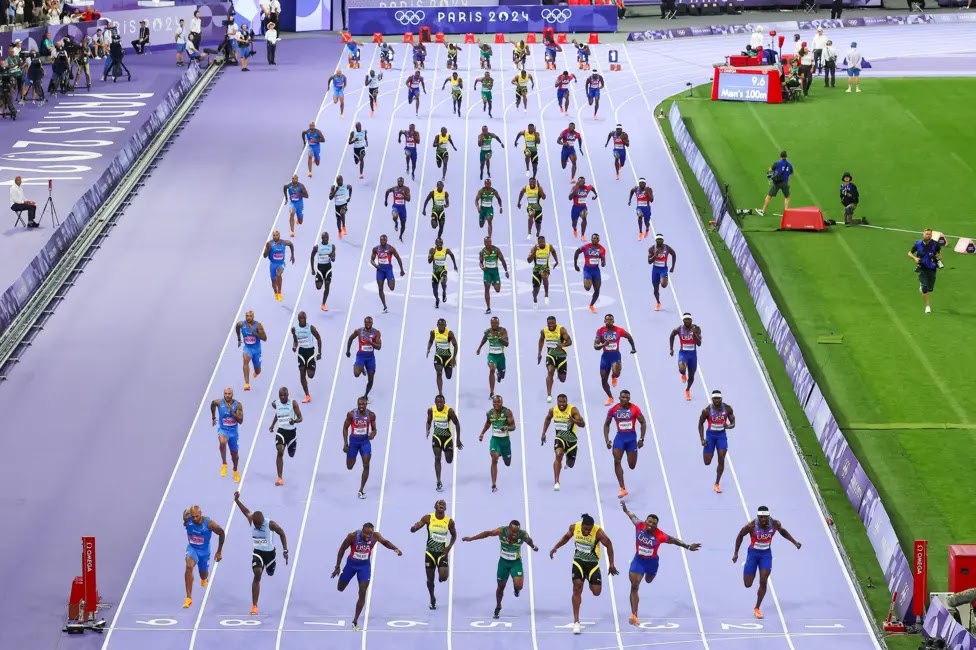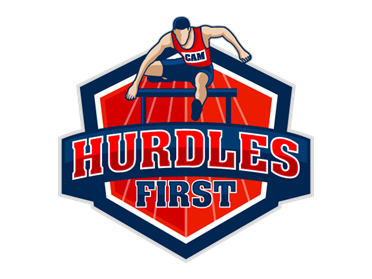On January 2020 I wrote an article entitled "Eleven wretched women, or how fake news almost killed women athletics". It's one of the best articles I have written in this blog. Unfortunately it has gone almost unnoticed, with just over 300 views, while my article on the javelin controversy has more than 12 thousand.
For those of you who have not read it (although I urge you to follow the link and read it in detail) here is a summary. In 1928, at the Amsterdam Olympics, after de Coubertin had retired, women events were admitted in the athletics program. The women's 800 m race was held on August 1 and 2. Twenty-five athletes in all presented themselves in the heats and 9 were qualified for the final. (It is most probable that E. Weber dropped out after one lap, but there is nothing about this in the official report. In any case we can see her on the right, smiling together with the winner L. Radke and 7th place finisher M. Dollinger, who had set an olympic record in the heats).
Dollinger, Radke and Weber
The final was won by L. Radke in a new world record. She was followed by K. Hitomi and I. Gentzel. At the finish line F. McDonald, leaning in order to beat B. Rosenfeld, tripped and fell. She was helped to her feet by the judges and that was that.
And then the opprobrious articles started raining. It started with the article of W. Shirer in the Chicago Tribune where he reported that 5 women collapsed on the track, F. McDonald needed to be "worked over" after her fall, and Hitomi needed a 15 min revival after suffering from complete exhaustion. Shirer was probably enjoying a drink at some Amsterdam bar instead of being at the stadium and, fearing for his career at the newspaper (he was just 24 at the time), he invented a sensational story. (It is really a shame that Shirer, who became a renowned historian, author of the famous "Rise and Fall of the Third Reich", had started his career as a misogynist liar). The lies of Shirer were surpassed by those of J. Tunis, who, according to the Wikipedia, is the "inventor of the modern sports story". Well, his article in the N.Y. Evening Post is a perfect example of a sports horror story.
The consequence of these lies was that the IAAF banned the 800 m from the women's program. To tell the truth the IAAF Areopagus were itching to eradicate women events from the olympic program. And women had to wait till 1960 in order to see the 800 m reinstated.
But this is the story I have written already and telling it again would be an overkill. The only reason I decided to write again on this subject was a recent article on the World Athletics site. The article was an interesting one. It was comparing the women's 2024 performances to those of their male counterparts of a century ago, in the Paris 1924 Olympics. (In case you have not followed my series on the long and arduous road of women to the Olympics, there were no women's athletics events in Paris, 1924). A. Milliat had appealed to the IOC but met with de Coubertin's refusal who declared that he did not approve of the participation of women in public competitions. "At the Olympic Games, their role should above all be to crown the winners”). The WA article points out that many of the current women's world records are better than the men's ones of a century back. The ones I find most impressive is F. Kipyegon's 3:49.04 in the 1500 m, beating the one P. Nurmi set in 1924, 3:52.6, by a full three seconds and B. Chebet's 28:54.14 beating the 28:54.2 of E. Zatopek established in 1954(!).
I was enjoying the article and then I arrived at the following paragraph.
I was flabbergasted. That was an article published in the official page of the World Athletics federation. And it was perpetuating the calumny. I did not know if it was bad journalism or misogyny (or an unhealthy mixture of both) but I was really shocked. I wrote immediately to World Athletics pointing out that the article was based on century-old fake news. (It goes without saying that I never received an answer and the article was never amended). To my eyes the things are clear. While the people who are managing sports are pretending to favour women-men parity, deep in their hearts they do not give a damn about women.
There is a great article in Women's Running entitled "The 1928 olympics scandal", talking about what happened in the women's 800 m in Amsterdam. (It's written by R. Robinson, author, among others, of what is considered as the reference book 'Running through time").

(Robinson's article is so good that, had it appeared before I wrote my own, I might have decided not to write on the subject). One thing I learned in that article was that H. Abraham, the 1924 gold medallist over 100 m, who worked as a journalist in 1928, wrote: "I do not consider that women are built for really violent exercise”. Clearly he was going along with the current prevailing in that era. But 30 years later, when women had started making a headway into athletics, he revised his position, writing: “The sensational descriptions of the terrible exhaustion which overcame the runners in this race, much exaggerated I can assure you, led to the abandonment of this event from the Games”. And of course, the worse enemies of women happen to be women (in case you are wondering, the main reason there is no official women's decathlon is because of the opposition of women heptathletes). B. Robinson, who won the 100 m race confided that “I believe the 220 yard dash is long enough for any girl to run. Imagine girls falling down before they hit the finish line or collapsing when the race is over! The laws of nature never provided a girl with the physical equipment to withstand the gruelling pace of such a grind”. Amazing!
Robinson (the author, not the sprinter) does not hesitate to allude to something that sounds like a conspiracy theory, namely that the IOC somehow made it known that they would welcome attention to the negative aspects in reporting the race. But the sad fact is that, at that time, (almost) everybody believed that women would be harmed by any endurance effort and they interpreted or twisted the facts accordingly. Sometimes that was cast in a (pseudo)scientific jargon, like the one of a woman doctor, correspondent of the London Times, who wrote: “Nature made woman to bear children, and she cannot rid herself of the fat to the extent necessary for feats of extreme endurance”.
Journalistic slopiness, conspiracy, unfounded scientific beliefs, one can more or less interpret what happened in 1928. But understanding what happened does not mean that one can forgive it. And, seeing that World Athletics is willing to repeat a blatant lie, one starts wondering whether flagrant jeering sexism (Robinson's expression) isn't still dominating the sports world.











